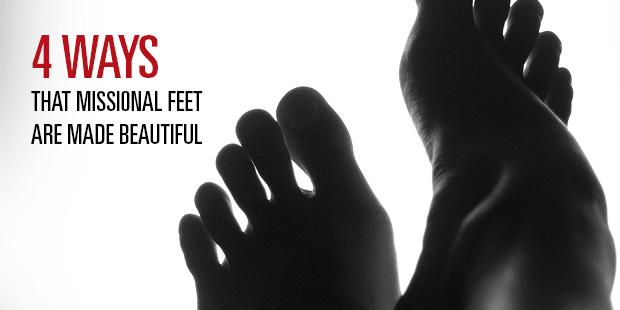
4 Ways That Missional Feet are Made Beautiful
I’ve written extensively about the missional nature of the church and the theological background that undergirds that nature. God is, by His nature, a sender. There are rich theological implications to that reality.
But, sometimes I want it simple.
I just want missional feet.
In the Bible we read about “beautiful feet” (Romans 10:15). My feet are not beautiful, I assure you, in their human form. However, they are made more beautiful when they move—they go on mission—and are missional feet.
Here are four ways missional feet are made beautiful.
1. Missional feet go to proclaim the gospel.
That’s the point of the verse above. The beautiful feet in Romans are beautiful because they belong to those who preach the gospel to a lost world. These are feet that carry the messengers to their destinations on mission with God. Missional can mean a lot of things to a lot of people, but if it does not include Jesus mission (who came, he said, “to seek and save the lost,”) we are not missional as Jesus was (Luke 19:10).
2. Missional feet go to serve the hurting.
When Jesus announced his public ministry, he did so by speaking on the hurting and the marginalized (see Luke 4:18-19). Then, later, he says, “As the father has sent me, so send I you” (John 20:21). The Bible is filled with admonitions toward serving the hurting and missional feet are feet in motion to the hurting.
3. Missional feet go to love the “other.”
The Bible is filled with themes about welcoming the outsider and stranger (Leviticus 19:33-34). Not only does God desire for us to welcome the stranger, we are also called to go to and love them– to love others. This requires intentional movement towards those that we would not regularly cross paths with (John 4:3-42). This also means that we intentionally love others when we receive no immediate return (James 1:17).
4. Missional feet go to others– together.
Mission is intricately tied to community. Actually, much of what I’ve already mentioned is made possible as we go with others. The writer of Hebrews explains that we are to “provoke one another to love and good deeds” (Hebrews 10:24). The language says a lot, we need some provocation to missional activation. And, that takes others.
At the end of the day, missional means we join Jesus on mission.
We go to them– the lost, the hurting, and the others– and we do it in Christian community. In doing this we not only love the world, but encourage one another.
In the Gospel of John we see the most moving passage concerning a theology of feet (13:1-17). In the loving act of washing his disciples’ feet Jesus proves his love for them, signifying the washing away of sins through his death. Moreover, Jesus sets an example of humility and servanthood. Don’t miss the sheer power of this image. In a culture where people walked long distances on dusty roads in sandals, the washing of people’s feet was considered to be a task reserved for slaves. It wasn’t the most appetizing of tasks.
As I said earlier, I do not have naturally beautiful feet. However, in Christ they are made beautiful. And the beauty of cleansed feet are put on display as we go on mission with God together. There are people all around us who are weary and broken, people who have endured hard paths in life. Following our Savior, let us serve them and point to the only one who can give them pure cleansing and true rest.
So while we are here, wandering in our temporary dwelling, let us use our feet to bring glory to Jesus. We know that one day we will fall at His feet in awe-inspiring worship. In light of our destination, let’s bring others with us as we journey that way.
Let’s have missional feet.
Read more from Ed here.

Tags: Connect, Ed Stetzer, Missional, Serve












